
Warm up
A warm up is an essential part of preparing your body for exercise, if it is not completed it can cause a huge range of injuries from a simple muscle strain to long term damage. Before starting any exercise begin with a gentle jog or cycle to get the blood pumping and your heart rate up, this allows lots of oxygen to be pumped around the body and starts to get the muscles warm. The warmer the muscles are the more pliable they become and less likely to tear. After about 5 minutes of gentle exercise complete a dynamic stretching routine with exercises such as high knees or heel kicks, these keep the heart rate up while stretching. Then you can complete any additional static stretches you might want to do.
- Important notification about information and brand names used in this slideshow!
- Photo courtesy of Michael Coghlan by Flickr : www.flickr.com/photos/mikecogh/6272239144/
- beta.active.com/fitness/Articles/6-Weightlifting-Tips-to-Avoid-Back-Pain
- http://weighttraining.about.com/od/physicaltherapy/a/Prevent-And-Manage-Back-Injuries.htm
- http://familydoctor.org/familydoctor/en/prevention-wellness/staying-healthy/first-aid/lifting-safety-tips-to-help-prevent-back-injuries.html
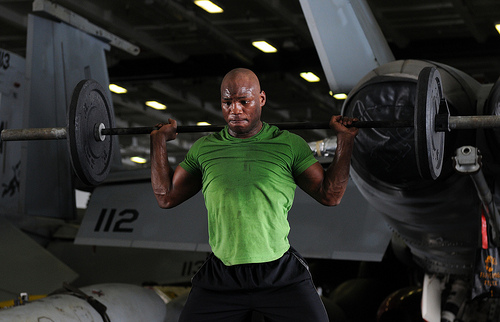
Don't hold your breath
A common mistake that happens when people are lifting weights is people holding their breath as they lift. This is extremely bad and it is important to exhale as you lift and then inhale as you lower it. When you lift you put a huge amount of internal pressure on the core of the body - chest and abdomen - which is useful to stabilise the body to be able to exert the power to perform lifts. However holding your breath increases this pressure above safe levels and this can lead to your back taking the strain of the weight and the possibility of damage occurring is increased.
- Important notification about information and brand names used in this slideshow!
- Photo courtesy of Official U.S. Navy Imagery by Flickr : www.flickr.com/photos/usnavy/6057134230/
- www.healthlinkbc.ca/kb/content/symptom/bacpn.html
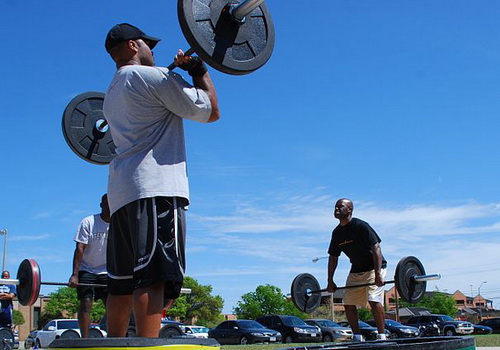
Keep your back straight
When lifting weights it is very important to not twist or turn particularly when your bending over for example during a deadlift. By keeping the back straight it is in its natural neutral position and the muscles are not being pulled in the wrong direction which leads to muscle strain and back injuries. Make sure that your shoulders are down and facing forwards and you should have your head up with the chin straight. As you lift try to maintain the straight position of the back so that the strain is distributed evenly across the back muscles and you are not relying more on one side than the other.
- Important notification about information and brand names used in this slideshow!
- Photo courtesy of Vernon Cunningham, U.S. Air Force by Wikimedia Commons : commons.wikimedia.org/wiki/File:Olympic-style_weight_lifting_training.JPG
- www.nhs.uk/Conditions/Back-pain/Pages/Prevention.aspx
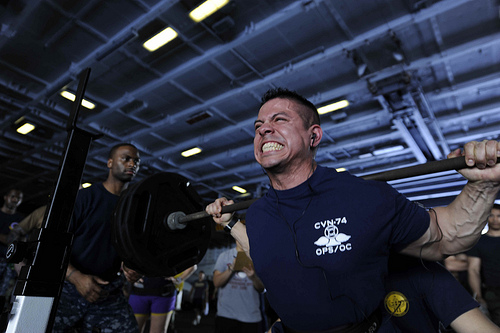
Lock your shoulders
One of the key pieces of advice that is given when weight lifting is not to lock your joints but this refers primarily to the knees and elbows where locking can lead to hyperextension and fractures. But to help avoid back strain the shoulders can be used to support the lifting movement rather than the back because by locking the shoulders your body uses them as the frame to support the movement. Often people swing from their backs when the weight is too heavy particularly in a bicep curl but locking your shoulders and upper arm into position stops the temptation of using your back and causing injuries.
- Important notification about information and brand names used in this slideshow!
- Photo courtesy of Official U.S. Navy Imagery by Flickr : www.flickr.com/photos/usnavy/8653260664/
- familydoctor.org/familydoctor/en/prevention-wellness/staying-healthy/first-aid/lifting-safety-tips-to-help-prevent-back-injuries.html
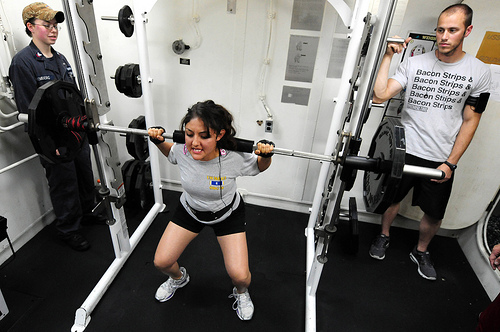
Squeeze your glutes
Lifting weights above the head are a common cause of lower back injuries because for example, during the shoulder press it is easy to arch the lower back which puts a huge amount of strain on the latissimus dorsi muscles causing strains and pain. If you squeeze your glutes as tight as you can this will stop the pelvis from tilting forward which stops the lower back from arching, so bringing the hips forward will help support the back. So next time you perform lifts where you raise the weight above your head remember to squeeze the glutes nice and tight to prevent lower back injuries.
- Important notification about information and brand names used in this slideshow!
- Photo courtesy of Official U.S. Navy Imagery by Flickr : www.flickr.com/photos/usnavy/8076850461/
- stronglifts.com/how-you-can-avoid-lower-back-pain-on-the-overhead-press/
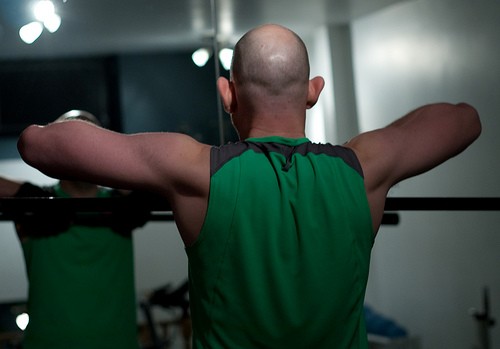
Find balance
Before you perform an exercise you need to find your balance. This is more important when lifting because if you are caught off balance while holding a heavy weight your back is the first part of your body which tries to stabilise and then causing a back injury. Before you start to lift stand with your feet shoulder width apart to get a good base of support and limit the risk of falling. Breathe in and out to relax your muscles and prepare yourself. When lifting from the floor it is good to grip the barbell or dumbbells first and make sure your base of support is solid before starting to lift.
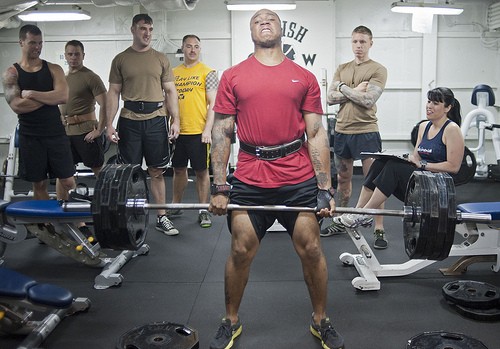
Bend at your knees and hips
Bending your knees during lifting is probably the most important way to prevent a back injury. If you do not bend your knees when lifting all of the strain and force is applied through the back muscles which is extremely hard particularly when lifting from the floor. Bending the knees relaxes the back and allows the legs to absorb some of the force so that the major back muscles can distribute the force and not put undue stress on any particular muscle. Practise the movement of lifting with no weight to make sure you are using the knees to the best of their ability before working with heavy weights.
- Important notification about information and brand names used in this slideshow!
- Photo courtesy of Official U.S. Navy Imagery by Flickr : www.flickr.com/photos/usnavy/7879781166/
- orthopedics.about.com/cs/backpain/ht/lift.htm
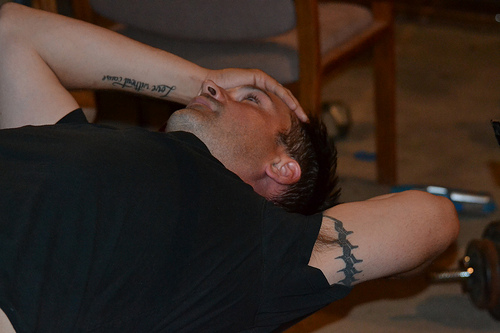
Don't rush
It's really important to complete the movements in a slow and controlled manner for two reasons, firstly to get the most out of the exercise as the slower you complete the movement the more stress the muscle is under and the better the results. Secondly, by controlling the movement of a lift it allows the muscles to work fully and go through their own full range of movement without putting a huge sudden stress on the muscle fibres. If the muscles are pulled too quickly they do not have time to stretch out and will more than likely tear or snap.
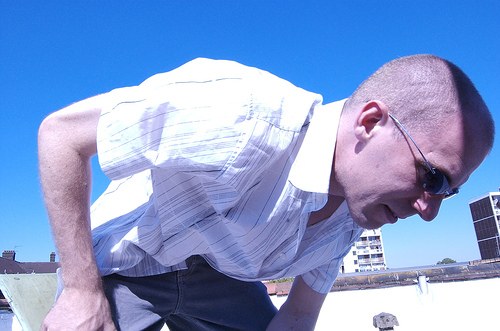
Types of back injuries
There are many different types of back injuries and understanding them is important to manage the pain or avoid the injury. Muscle sprains and strains are the most common and are caused by small tears in the actual muscle tissue and can be the most painful taking a long time to repair. Sciatica is caused by nerve damage from the nerve being compacted from a vertebral disc being out of position which can happen if you have the wrong lifting technique. Also stress can cause undue muscle tension, so if you are lifting while stressed your muscles are going to be under increased tension leading to tissue damage.

Treatment of back injuries if they happen
If you do get a back injury the first thing to do is rest and take pain relief medication. Most pain relief medication bought over the counter contains anti inflammatory to decrease any swelling of muscles which will help to decrease the pain. Icing the affected area will also help to control any pain and swelling. Manual therapy such as massage can also be used to promote the healing process but this can only be used once the initial swelling has gone to make sure not to cause any more damage. If problems persist you should seek medical advice to check there is no long term muscle or vertebrae damage.


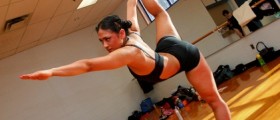
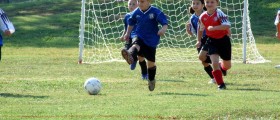


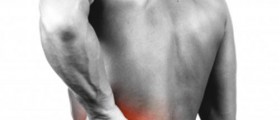




_f_280x120.jpg)
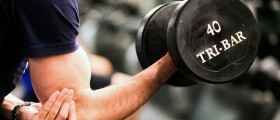
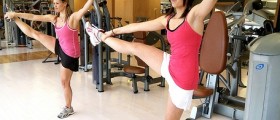




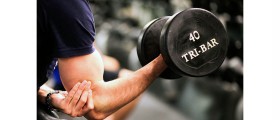

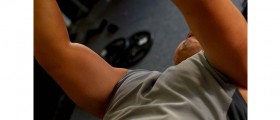
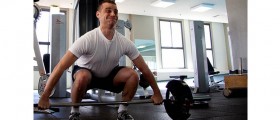





Your thoughts on this
Loading...